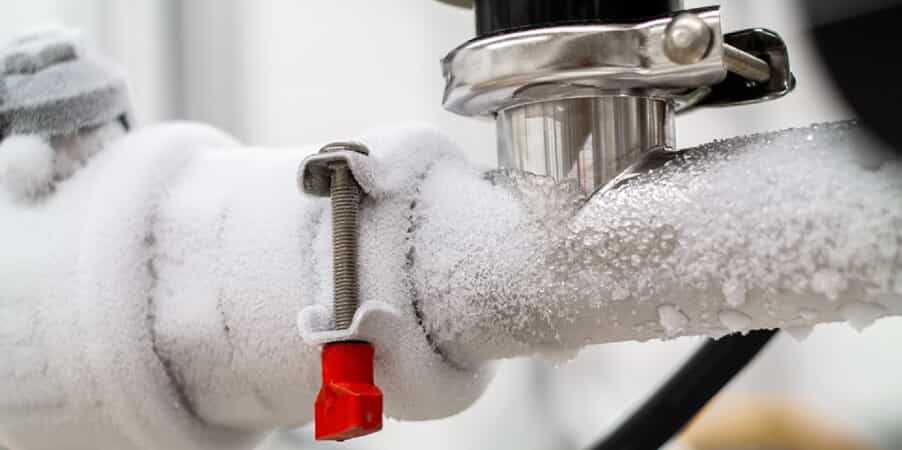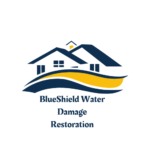
One of the most destructive and common issues in very cold climates is frozen pipes, which cause significant problems for homeowners and businesses alike. When temperatures drop, uninsulated or poorly maintained pipes are on the verge of freezing, leading to heavy damage. From structural inconvenience to costly repairs, life can be brought to a halt by frozen pipes. BlueShield Water Damage Restoration provides its clients with trusted expertise in overcoming such pipe-related emergencies and preventing future incidents.
Frozen Pipes
1. What Freezes Pipes?
Low Temperatures and Poor Insulation: Pipes exposed to freezing temperatures without proper insulation are highly susceptible to freezing.
Lack of Running Water: Stagnant water in pipes is more likely to freeze during extreme cold.
Vulnerable Locations: Outdoor pipes, pipes in unheated basements, and those running along exterior walls are at greater risk.
2. Why Are Frozen Pipes a Problem?
Risk of Pipe Bursting: The expansion of ice within a pipe may cause it to burst due to increased pressure.
Structural Damage: Leaks or broken pipes can cause water damage in walls, floors, and ceilings.
Disruption to Daily Life: Frozen pipes can cut off the supply of water and result in costly repairs, affecting households and businesses.
Identifying Frozen Pipe Signs
1. Visual Signs:
- Frost or ice formation on exposed pipes.
- Visible bulging or cracks in the pipe structure.
2. Functional Problems:
- No or little water flow from faucets.
- Gurgling or clanking noises when trying to use water.
3. Secondary Indicators:
- Water leaks or puddles forming near pipe locations.
- A sudden drop in water pressure.
Immediate Actions to Take When You Suspect Frozen Pipes
1. Turn Off the Water Supply:
Shut off the main water valve to avoid potential flooding.
2. Find the Frozen Pipe:
Identify the affected pipe, paying much attention to susceptible areas, especially basements and exterior walls.
3. Check for Damage:
Check visible cracks or any sign of a leak.
Seek BlueShield Water Damage Restoration for comprehensive assessment.
How to Thaw Pipes Safely
1. Thaw Pipe Methods:
- Hairdryer and heating pad apply gentle heat through exposed pipes
- Wrap pipes in warm towels.
- Use heat tape or space heaters with caution beside pipes.
2. What to Avoid:
- Never thaw pipes with an open flame since it can lead to a fire.
- Do not overheat pipes since it can cause more damage.
3. Thawing Hidden Pipes:
If pipes are hidden within walls or floors, then it is best to seek professional help to minimize risks and ensure proper thawing.
Recovering from a Burst Pipe
1. Containing the Damage:
- Shut off the water and electricity immediately.
- Remove standing water to prevent further structural damage.
2. Repairing the Pipe:
- Use temporary fixes, such as pipe clamps or epoxy putty.
- Schedule permanent repairs with professionals like BlueShield Water Damage Restoration.
3. Restoring Your Property:
- Dry affected areas to prevent mold growth.
- Use sanitization and dehumidification processes to return your place to a safe environment.
Preventing Frozen Pipes in the Future
1. Insulation and Heating:
- Insulate exposed pipes with foam covers.
- Keep the interior of your home at a consistent temperature during winter.
2. Maintaining Water Flow:
- Allow faucets to drip during freezing conditions to maintain flow of water.
- Drain outside hoses and turn off outdoor-water valves.
Common Problems When Dealing With Frozen Pipes
1. Delayed Discovery:
Waiting too long to identify frozen pipes results in extensive water damage and larger repair bills.
2. DIY Blunders:
It could get worse when thawed incorrectly, with bursting pipes and additional damage to pipes.
3. Water Damage Long Term:
Water that lingers around will cause structural issues and growth of mold unless taken care of right away.
Real-Life Examples of Frozen Pipe Recovery
1. Residential Case Study:
BlueShield successfully restored a family home after a burst pipe caused extensive flooding, ensuring long-term safety and functionality.
2. Commercial Case Study:
Assisted a business in resuming operations quickly after frozen pipe damage disrupted daily activities, minimizing financial losses.
When to Call a Professional
1. Knowing when to Seek Help:
- Recurring freezing problems or latent pipe damage.
- Water damage that spreads beyond the immediate perimeter of containment.
2. BlueShield Steps into Recovery:
All-inclusive assistance, from frozen pipe thawing to whole property restoration.
Conclusion:
Frozen pipes present a grave concern and really require intervention immediately so as not to incur extensive damage. Quick problems resolution and utilization of professional service such as those of BlueShield Water Damage Restoration help minimize the risk and quickly recover. Take proactive measures in insulating and keeping your pipes going. If you experience frozen pipe issues, reach out to BlueShield for help in fixing emergencies and protecting your property.
